A youtube video of one of our favorite sites http://www.iconaerialmedia.com/sites-we-like/
Well done Simon!
A youtube video of one of our favorite sites http://www.iconaerialmedia.com/sites-we-like/
Well done Simon!
Aerosense drone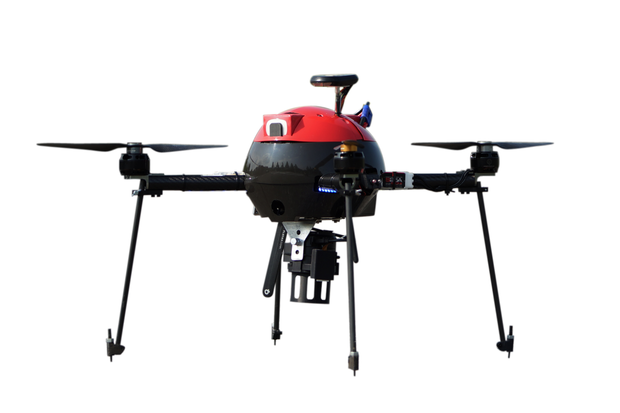
A drone developed by Sony’s unmanned aerial vehicle venture Aerosense is seen in a promo image. The startup wil target enterprise users in everything from farming to construction from 2016. Credit: Aerosense
Equipped with a high-speed data transfer module, the quadcopter uses Sony’s lens-style camera to image construction sites and farms.
By Tim Hornyak
IDG News Service | Aug 24, 2015
Sony is gunning for a slice of the growing drone market, showing off newly developed unmanned aerial vehicles (UAVs) from its just-launched drone venture, Aerosense.
In addition to the vertical takeoff and landing (VTOL) craft hinted at last month, Aerosense on Monday exhibited a quadcopter that makes use of Sony’s lens-type camera, the QX30.
The camera, which resembles a lens for a digital single-lens reflex (DSLR) camera and can link to smartphones, is attached to the belly of the quadcopter, where it can take high-resolution images.
Designed for use in urban areas such as construction zones, the AS-MC01-P quadcopter weighs about 3 kilograms (6.6 pounds) and can fly for about 15 to 20 minutes on a battery charge.
It can operate autonomously, flying within a preset zone, and is equipped with GPS, Wi-Fi and an inertial navigation system. It also has a high-speed data transfer module that uses Sony’s TransferJet technology.
In a presentation in Tokyo, Aerosense showed how photography from the camera can be turned into 3D imagery, showing, for instance, the volumes of piles of gravel at a construction site.
The venture’s other craft, the AS-DT01-E winged VTOL drone, has a rotor system that allows it to fly like a helicopter or a plane. The advantage of the winged format is that it can fly at much higher speeds than most non-military drones — up to 170 kilometers per hour (106 miles/hour) compared to high-speed quadcopters that fly at 75 kph (47 mph).
Weighing 7kg (15 pounds), it can carry a 3kg payload (6.6 pounds) and operate for at least two hours on a battery charge.
Aerosense will target enterprise customers when it begins to offer drones for monitoring, surveying and inspection next year.
Potential applications include photographing agricultural land, mining sites and mountainous areas to check for damage after a storm.
Sony wants to use its smartphone technologies such as cameras and networking know-how to give Aerosense an edge. Sony Mobile Communications owns just over 50% of the venture, with the rest in the hands of Tokyo robotics firm ZMP, which set up a robot taxi company earlier this year along with mobile gaming giant DeNA.
Sony also has robotics resources that it is putting into the drone business. Aerosense’s CTO is Kotaro Sabe, who worked on the electronics maker’s Aibo robot dog and Qrio humanoid robot, both of which were shelved when Sony shut down its entertainment robot business about 10 years ago.
Sony’s Xperia smartphones have been struggling in Japan and overseas against the more popular Apple iPhone as well as Android rivals.
“It’s possible that future growth in smartphones could be limited, so we have to engage and invest in new business opportunities,” said Hiroki Totoki, head of Sony Mobile Communications.
http://www.computerworld.com/article/2975016/emerging-technology/sonys-quadcopter-takes-its-smartphone-tech-to-the-skies.html
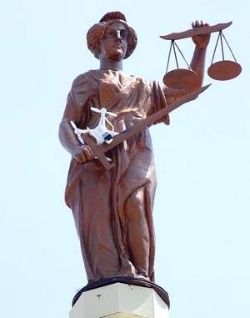
Two women, aged 40 and 48, were injured on Saturday after they were hit by a drone that fell from the sky in the Buenos Aires City neighbourhood of Constitución. A 20-year-old man seen controlling the devise was detained briefly by police.
The peculiar incident occurred close to Constitución station on Saturday afternoon, but only came to light yesterday. Both women when sent to Argerich Hospital for treatment.
Drones have become a growing problem in public areas, with many novices operating them with little or no experience. They are very popular at football matches, outdoor concerts and rallies.
Just a month ago an airline pilot reported seeing a drone flying close to his plane as he was coming in to land at the Jorge Newbery Metropolitan Airport in Buenos Aires City
SAME director Alberto Crescenti said yesterday that both women are still under observation in hospital.
Until recently, the drones fell into a legal loophole in Argentina as there was still no legislation to control who could use them and where. The National Administration of Civic Aeronautics (ANAC) then changed resolution 527, later published in the Official Gazette, stating that from January of next year users will need to have a licence to use drones in public.
The new rules also forbid flying any Unmanned Aerial Vehicles (UAVs) at night.
Moreover, those who wish to use drones for recreational purposes will be required to get insured.
The drone involved in the weekend’s accident was reportedly being used to film a television commercial.
“Remotely piloted air vehicles or systems cannot be used over densely populated areas or crowds of people,” says the new ruling.
The drones will not be allowed to “operate within a lateral distance less than 200 metres from residential areas, housing developments, detached houses, roads and/or highways and public or private meetings outdoors, and less than one kilometre from towns or cities.”
http://buenosairesherald.com/article/196773/falling-drone-hits-two-in-downtown-ba
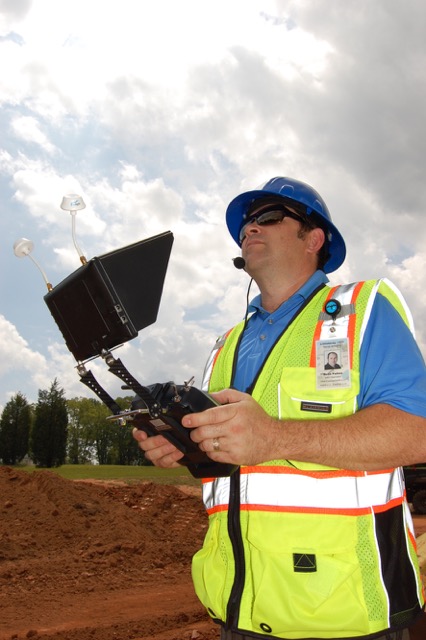
It’s a great time to be in the UAS industry. New rigs and accessories are being revealed weekly. If you are reading this article, there’s a good chance you are serious about how you operate whether you are a commercially licensed pilot or a photographer transplant that had to add a UAS to stay ahead of your competition. In either case, to further this industry we must utilize SOP’s (standard operating procedures) and FOM’s (flight operations manuals). Let me explain why.
After 15 years as an ATP licensed pilot and flying airplanes for 26 years, I have checklists and standard operating procedures deeply engrained in my cerebellum. I have applied these to other areas of my life due to their efficiency. For now, lets just look at transportation. Imagine your morning commute, you find the interstate filled with big rigs without brakes doing 180MPH. Sound scary? Well, think about some of the drivers having learner permits, and some who have more experience, all mixed together out there. Wouldn’t you like a little more organization out there? Someone controlling a bit of that? That’s just what our Air Traffic Control system does.
ATC handles around 28,537 commercial flights per day. How do they manage to all operate safely? An airline pilot sometimes meets his copilot minutes before they take a metal tube 36,000 ft in the air at 593.741miles an hour. Standard Operating Procedures is a giant part of those 28,537 successful flights. Because of the SOP’s, both pilots could literally not talk (except for reading the checklist) the entire flight and know what and when the other pilot was going to do the ENTIRE flight.
As I said in the beginning, if you are reading this, you are trying to operate professionally. In order for the general public, clients, and government entities to have confidence in professional UAS operators, we should have these things in place. Not only do they exponentially increase safety, and make things more efficient, but they also show professionalism. Do you currently have a procedure for camera man loss of monitor, bird strike, erratic control issues, securing launch points? Do you operate the same way every time? Do you and your cameraman use headsets? Does your VO know anything about UAS operation? Does your video editor know the order of sent videos? Having SOP’s in place creates efficiency and adds safety to your operations. After all, time is money and we all know what a lack of safety can do to the wallet. Not only that, but this industry certainly does not need anymore help with bad press!
When we, a group of professional commercial pilots, decided to create this company it was natural for us to build the company with the same parameters as the aviation environment we were all familiar with. For example: NO equipment is taken out until a walk around is completed. We mark our launch area with a launch pad and secure our entire flight area so that everyone around is familiar and comfortable with our operation. Our job spec sheet is completed and put on our launch pad before flight so that it gets recorded as we check our controls. So just like any professional aviation operation, anyone of our operators can fly or camera any one of our rigs.
The technology available to us makes creating a safe operation even easier. With all of the software on our smart phones, aircraft specific checklists are easy to create and distribute. Most manufacturers have proposed items and we added important things we felt had been omitted. On the back of our ID’s is a non craft specific checklist, which includes things outside of the UAS. Point being, SOP’s and FOM’s may sound like a bunch of yaya and extra work but really it requires just a little planning and effort to garner a lot of return.
I am not writing this to boast about our operation, but to further this industry. Lets be real, some of our lower margin customers don’t care if we wear a “film crew” labeled vest and operate with SOP’s, but eventually our haphazard non 333 exempt competition may be asked to produce some of this. Why not go ahead and set a new standard? One that sets the real professionals apart. This will not only set you up for success but launch this new drone industry into a good future.
http://www.suasnews.com/2015/08/37783/tired-of-a-bad-rap-and-im-not-talking-run-dmc/

Reports in the news media about close calls between drones and airliners draw an interesting reaction from UAS enthusiasts on social media. The reactions range from:
A) The airline pilots aren’t actually seeing what they think they’re seeing
B) The media is hyping and sensationalizing these accounts
C) UAS operators are being unfairly targeted and persecuted
D) Nobody can tell me where I can fly my UAV
There are probably some elements of truth to A and B.
It’s possible that not everything airline pilots are reporting as close encounters with drones are really drones. However, I tend to believe that given the level of training and professionalism among airline pilots—not to mention the sheer number of hours they spend in the air—a large majority of their reports are accurate.
I’ve seen videos posted on YouTube of drone operators who admit that they’re flying too close to an airport, flying far above 500 feet, allowing their UAV to fly beyond line of sight or flying in unsafe conditions. They’ll often rationalize their actions by saying that they know what they’re doing is safe.
But that’s like me saying I can safely drive my car the wrong way down the Interstate. It is safe until I encounter traffic traveling the opposite direction. When it becomes unsafe, it’s suddenly too late to correct my bad decision.
Complaining about the media hyping or sensationalizing the reports of near-misses between manned and unmanned aircraft does little good because it’s what the media does. You might as well complain about the color of the sky.
That’s not to say that the UAS world should ignore sensationalized or inaccurate reporting. Setting the record straight is always a good move. Most reporters don’t like making mistakes—much less repeating them. Many will welcome the opportunity to become better educated.
I salute those in the UAS community who take the proactive approach of educating and informing government officials and the public about the uses and great potential of the technology. People often fear or distrust new technology, especially when they don’t understand how it works or its practical limits.
There will be a day when UAS become a common sight and play such a major role in our everyday lives that we’ll become indifferent to their presence. Until then, the best approach is to keep reminding the public that the benefits and advantages of UAS far outweigh the harm caused by a few irresponsible users.
That brings me to points C and D. Let’s acknowledge the reality that not everyone flying a UAV is doing so in a safe and responsible manner. You don’t need to do much investigating to know that this is true. Just because someone is a member of the UAS community doesn’t mean that he or she is worth defendeding if they’re flying carelessly, recklessly or simply using poor judgement.
It is those who are ignoring or bending the rules and displaying a disdain for common sense that are doing the most to harm the future of UAS. They are the ones most likely to cause an incident that triggers an overreaction in the form of unnecessary laws and unneeded regulations.
Because some of the rules and regulations of the UAS road are uncertain or unclear at the moment doesn’t mean that we shouldn’t do our best to police ourselves.
http://www.uasmagazine.com/blog/article/2015/08/the-best-response-to-negative-uas-press
http://www.texastribune.org/2015/07/25/texas-body-farm-research-uses-corpses-solve-crimes/

SAN MARCOS — A drone flew over the sprawling hills of Freeman Ranch about two years ago, capturing a monochromatic photograph. The gray landscape was grass and dirt and the white spots denoted excessive vegetation. The black flecks were decomposing corpses.
It was exactly the picture that Daniel Wescott, a forensic anthropologist, and Gene Robinson, the owner of a search and rescue organization, were looking for to prove their suspicions that a plane equipped with the right technology could locate the dead.
“We just had one of those eureka moments,” said Robinson, who is based in Wimberley. “We can put these two things together and suddenly we have a forensic tool.”
The ranch is home to about 50 human corpses donated to the Forensic Anthropology Center at Texas State University, which uses them to conduct research that can help medical examiners identify bodies, rescuers find missing persons and law enforcement solve crimes.
Dead bodies are peppered across Texas State’s gated 26 acres on Freeman Ranch. Some are completely decayed down to bones loosely covered by tan, leathery skin, while more recent arrivals resemble the living except for the swollen flesh and colonies of flies laying eggs in facial orifices.
Wescott is the director of the center, known informally as a “body farm.” He helps design many of the research projects in the hopes that by controlling the conditions the body decomposes in — and knowing the biological facts of the person who died — the studies can offer insight on murders or unexplained deaths when much less information is available.
The drone flights are part of an ongoing study using near infrared imaging to detect corpses above and below the ground that are often not visible to the naked eye. The technology can also spot locations where a corpse was previously buried for up to two years after it has been removed.
“The search for clandestine bodies is a very time-consuming ordeal,” Wescott said. “Even then, a lot of times you can walk right by them and not realize that they’re there.”
Near infrared imaging picks up reflectance; as a corpse decays it releases carbon and nitrogen into the soil, decreasing the amount of light the soil reflects. At first, the influx of chemicals kills plants, but as it disperses into the area around the body it turns into a fertilizer causing extra vegetation, which reflects a lot of light.
The two extremes show up as black and white on the mostly gray near infrared imaging, giving anyone looking for a body, Robinson said, double the chances of finding of it.
The Texas State labs, which opened in 2008, are constantly churning out research. The placement and conditions of the bodies are purposeful; many are protected by metal-pole cages, but those that aren’t resemble a collection of scattered bones, pillaged by vultures and raccoons. Corpses are above and below ground as well as in both the sun and shade to compare the decay of each. Some bodies are wrapped tightly in tarp, part of a new study that will look at the rate of decay for a common modus operandi of disposal for murders.
The center grabbed national attention recently when it collected the remains of 80 undocumented immigrants who died after crossing the border. Found in a mass grave in Brooks County, the bodies were buried haphazardly, some covered only by trash bags and shopping bags.
Kate Spradley, a researcher and associate professor of anthropology at Texas State, leads a team working to identify the immigrants and send their remains home. The work is slow, and so far the team has confirmed three identities.
http://www.suasnews.com/2015/07/37456/nz-new-drone-rules-criminalise-a-hobby/
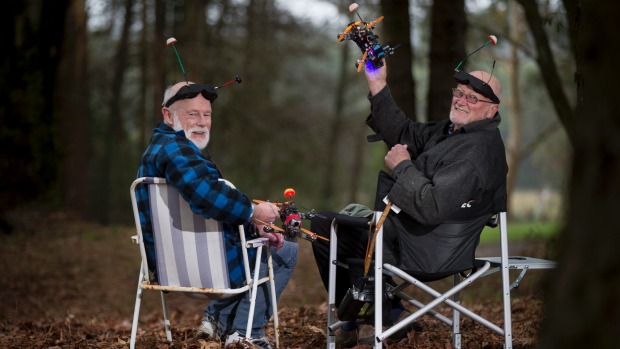
BRUCE SIMPSON
As a young boy in the 1960s I spent many hours down at the local park or schoolyard, flying my carefully hand-built model aircraft.
It was such a buzz to see them take to the air – even if they usually did crash just moments later.
Over the 50 years or so since those halcyon days of my childhood, I have continued to enjoy a hobby that exercises the body and the mind. Far better to be outdoors enjoying the sunshine and summer breezes than spending hours in front of the dim glow of a computer screen – as so many of today’s kids are given to doing.
In my entire 55 years of flying model aircraft, I have never once injured anyone nor damaged anyone else’s property – and that’s despite being a very active participant of the hobby. Most of the time I was flying the only rule was ‘use common sense’ – and obviously this has worked pretty well for me and the thousands of other Kiwis that have enjoyed this innocent pastime. I have searched high and low but can not find any records of anyone dying or harming another in New Zealand as a result of this hobby and it seems that the only injuries sustained seem to be related to the operator’s own body and small propellers – sometimes painful but not fatal.
So it was with great sadness, that I read through the CAA’s new regulations for the operation of radio controlled flying models and drones – now collectively called “remotely-piloted aircraft”. How tragic it is that in one fell swoop of the regulator’s pen, those who fly these craft for pleasure and relaxation are now treated like criminals and have effectively been stripped of the rights they’ve enjoyed for so long – despite the fact that this hobby has an outstanding safety record?
No longer can a father and his young boy just walk down to the local schoolyard or park to fly the cheap toy model purchased online from China or carefully hand-crafted over a long series of winter evenings. Although these craft may weigh just a few tens of grams, the new regulations consider them to be every bit as menacing, risky and dangerous as the much larger professional drones used by commercial operators.
If you or your children fly their tiny toys anywhere, without first obtaining the permission of the property owner over which they will briefly soar, then a $5000 fine is in the offing.
What’s more, even if the local council sets aside a small park or reserve in which you have permission to fly, you must also seek the permission of anyone else who is using that area or who enters that area – lest you face another possible $5000 fine.
This leaves me asking – what has gone wrong with this country?
Why are we treating children and responsible adults like enemies of the state, threatening them with huge fines for doing nothing more than that which they’ve been doing for decades, in complete safety and in harmony with the world around them.
The ironies are abundant and quite worrying.
I can walk across any piece of land in New Zealand without fear of being fined or imprisoned – at worst I’ll be asked to leave and possibly trespassed. If I have a full-sized aircraft, I can fly it across almost any piece of land in New Zealand with impunity. However, if my child flies his 20-gram toy over the same land without gaining the expressed prior permission of the landowner, he has committed an offence under CAA’s new regulations; an offence of such magnitude that it warrants a $5,000 fine. How does that work exactly?
CAA tell us that these new regulations are risk-based and that the more risky the operation, the tougher the regulations and penalties. So please explain to me how it is somehow less risky for a commercial operator to fly his very large, very heavy, potentially lethal drone over my head without my permission – than it is for my child to do the same with his feather-weight 20 gramme toy? (pictured)
It would appear that CAA’s definition of risk is significantly different from my own, or that of anyone else I have spoken with.
Clearly CAA failed to consult with credible independent experts before conjuring up these new regulations. For example – they stand to have a decidedly negative impact on our tourism industry.
In most countries around the world, it is legal to fly recreational drones in public places – so long as you adhere to a few commonsense rules. Sadly for us, it is now illegal for anyone to fly a drone in a public place without prior consent. In the case of most of NZ’s landscape, obtaining that consent will likely be nigh on impossible for someone who’s only in the country for a few weeks. Already I have heard from a number of regular tourists to New Zealand who have said they will be striking this country from their list of preferred destinations.
Why is this?
Well these are the early-adopters who love NZ’s adventure-tourism attractions. These are the people who have already replaced their 35mm camera and camcorders with a flying camera in the form of a drone. They aren’t satisfied with 8×5 glossy snapshots of their holiday, they want high definition video of all the places they visit – taken from an aerial vantage point. They want to use their drone to get incredible external footage of them whizzing down our ski slopes.
Whilst such things are totally legal in most other countries – try it in New Zealand after August 1st and you could cop one of those $5,000 fines for your troubles.
CAA’s new regulations have clearly made NZ a much less desirable destination for the young, affluent tourist who has money to burn and a yearning for the latest gadgets. What’s more, as drone-based cameras become more commonplace, a greater percentage of our tourist market will opt for more “drone-friendly” countries than NZ.
Does our tourism industry even realise what they’re about to lose? Were they even consulted? I strongly suspect the answer to both questions is a resounding “no”.
So congratulations CAA – you have criminalised a hobby and are twisting a knife in the belly of our adventure tourism industry through your poorly conceived regulations.
Of course if you want to sidestep many of these restrictions, you can simply pay CAA a large fistful of dollars and then have the right to fly pretty much anywhere you want – regardless of the concerns of those below your craft. Yes, somehow, the payment of money is a sure-fire way to reduce risk – or so it would seem.
All I can deduce from this is that we have yet another case where the rights of New Zealanders are being erased and replaced by “privileges” that must be purchased from the appropriate government agency.
August 1st, 2015. A sad day for children and a sad day for the freedoms and rights of Kiwis.
http://www.theguardian.com/global-development/2015/jul/28/drones-flying-in-the-face-of-disaster-humanitarian-response
Unmanned aircraft can be put to effective use in humanitarian situations, but a code of conduct is needed to make sure they are used safely and efficiently
A drone delivers supplies and medicine to thousands of people seeking dental and medical care at a clinic in the Wise county fairgrounds in Wise, Virginia. The flight was undertaken in part to study how the technology could be used in humanitarian crises around the world.
A drone delivers supplies and medicine to thousands of people seeking dental and medical care at a clinic in the Wise county fairgrounds in Wise, Virginia. The flight was undertaken in part to study how the technology could be used in humanitarian crises around the world. Photograph: Pete Marovich/Getty Images
Guardian Global development is supported by:
About this content
Jennifer Hlad in Washington
Tuesday 28 July 2015 08.42 EDT
After typhoon Haiyan wreaked havoc on the Philippines in 2013, killing more than 6,300 people and destroying farms and villages, several relief groups flew drones over the affected areas to survey the damage, identify blocked roads and find displaced people.
But the drone operators didn’t share the information they gathered with local authorities or other relief organisations, says Patrick Meier, who was in Manila doing humanitarian work with the UN at the time. Many of the drone teams didn’t even know about one another, making their work inefficient and even dangerous.
These problems highlight the need for a code of conduct and best practice for drone use in humanitarian situations, says Meier, who founded the Humanitarian UAV Network to move toward that goal. Meier was one of the speakers at a recent symposium on drones in Washington, which discussed many uses of unmanned aircraft in humanitarian situations but highlighted the need for regulation. Meier says the Humanitarian UAV Network plans to launch a set of guidelines next month that will make sure drone use in humanitarian settings is safe, coordinated and effective.
Nepal’s farmers struggle to overcome terrible legacy of earthquakes
Read more
Though unmanned aircraft are best known for their military uses, smaller drones are becoming popular with photographers and others with a few hundred pounds to spend and a desire for aerial images. In June, police in London seized a drone flying over Wimbledon, two days before the tennis tournament was set to begin. In July, efforts to drop water and retardant on rapidly spreading fires in southern California were stymied by drones hovering over the flames, because of the risk to firefighting aircraft. Also in July, a teenager in Connecticut posted a video of a homemade drone firing a gun in the woods.
But there are many ways drones can be used for good, says Peter Rabley, property rights director for the Omidyar Network, a philanthropic investment firm. Drones can democratise data collection and “help make the world a better, safer place”, he says.
Unmanned aircraft have been used to track Indonesia’s progress rebuilding after the 2004 tsunami, to monitor sporting events in the Netherlands so that injured athletes can get medical attention more quickly, to track weather in Peru, and to rebuild communication networks in Ireland after floods, according to Abi Weaver, director of international services for the American Red Cross. In South America, drones are helping to preserve archaeological sites, simplify the land titling process, and document environmental violations.
Advertisement
Drones also can be used in disaster preparedness: identifying risk areas before a disaster strikes, Weaver says. However, it is critical that residents in any area where drones are being flown are informed and consulted about how and where they will be used.
Secure property rights are the bedrock of property development, but many communities lack the information and documentation required for those rights, according to Janina Mera, a researcher with Land Alliance. Involving local authorities and community members in these efforts is critical to their success, she says.
The information and highly accurate photos provided by drones helped to reduce the normally cumbersome titling process in Peru to 10 days or less – allowing property owners to protect and develop their land more quickly.
Gregor MacLennan, programme director for Digital Democracy, says he found people were more engaged when they helped build the drone and flew it themselves. In Peru and Guyana, MacLennan’s organisation has used drones to document how oil pipelines and mines are causing environmental damage, and to take photos of villages to evaluate land use.
Work that took days or weeks in the past can now be done in just 30 minutes with a drone, according to Nina Tushev, a drone enthusiast who has flown drones over oil pipelines in Peru to help indigenous people monitor damage to the rainforest.
In the Democratic Republic of the Congo, the UN is operating five drones as part of their overall peacekeeping efforts.
Advertisement
The drones fly for about five hours each time they go up, but can only be flown within line of sight of the operator, says Konstantin Kakaes, a fellow at New America, a thinktank in Washington. But some problems with the drones have impeded their peacekeeping mission. They aren’t all-weather capable, and while they can detect people below the forest canopy, they can’t determine who those people are or what they’re doing. Even when the drones do get good reports, there aren’t enough people to interpret all the photos, Kakaes says.
No matter the intended use, unmanned aircraft raise many questions about ethics, safety and privacy rights – and regulation lags behind technology, Rabley says. “This is where smart, informed public policy is especially critical. We look forward to engaging with the global community in a measured, even-handed conversation about how we parse the legitimate ethical and legal considerations that drones have uncovered.”
http://www.bedfordtoday.co.uk/news/business/business-news/video-inspection-drone-cuts-time-needed-to-safety-check-aircraft-and-buildings-1-6873258
http://www.suasnews.com/2015/07/37479/inspection-drone-cuts-time-needed-to-safety-check-aircraft-and-buildings/
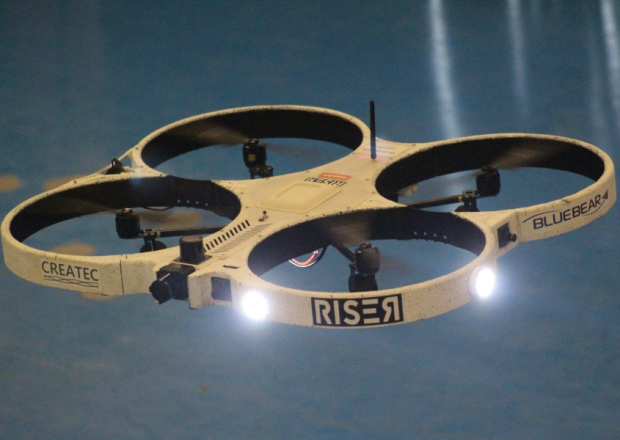
The time taken to inspect buildings, aircraft and other large inanimate objects has been dramatically slashed with the release of a new drone.
Drone developers Blue Bear Systems, which is based in Clapham, Bedfordshire, has joined with sensing specialists Createc to build the RISER Inspection System drone.
The past months have seen the inspection system examine an easyJet A320 aircraft, HMS Diamond and even a building in Canary Wharf, checking for potential damage due to general wear and tear.
Blue Bear technical director Dr Ian Cowling said: “Depending on size, RISER takes around 20 minutes to inspect an object, pinpointing minute damage that would take hours manually.
He added, the drone has ‘collision avoidance’ capability which prevents possible interference or contact with the structure under inspection, and Geo-fencing also ensures RISER does not navigate away from a set route.
“RISER flies approximately one metre away from the inspected object, analysing and processing any damage whilst building a 3D picture of the world around itself.”
In 2012, the ‘RISER’ Inspection System drone was produced with help from a £30,000 grant awarded to the companies by INNOVATE UK, with the aim of creating a product that could inspect static objects, whilst also being able to identify radiation.